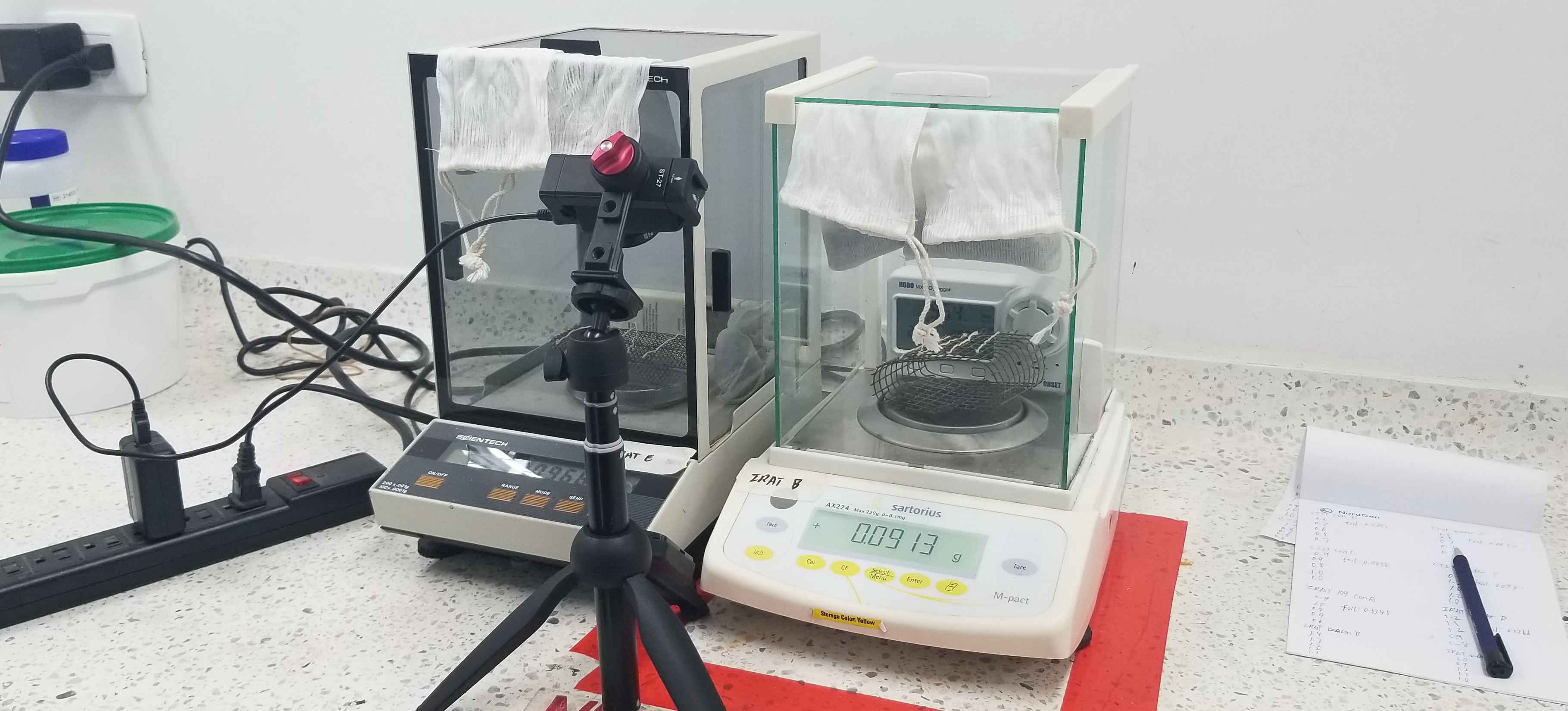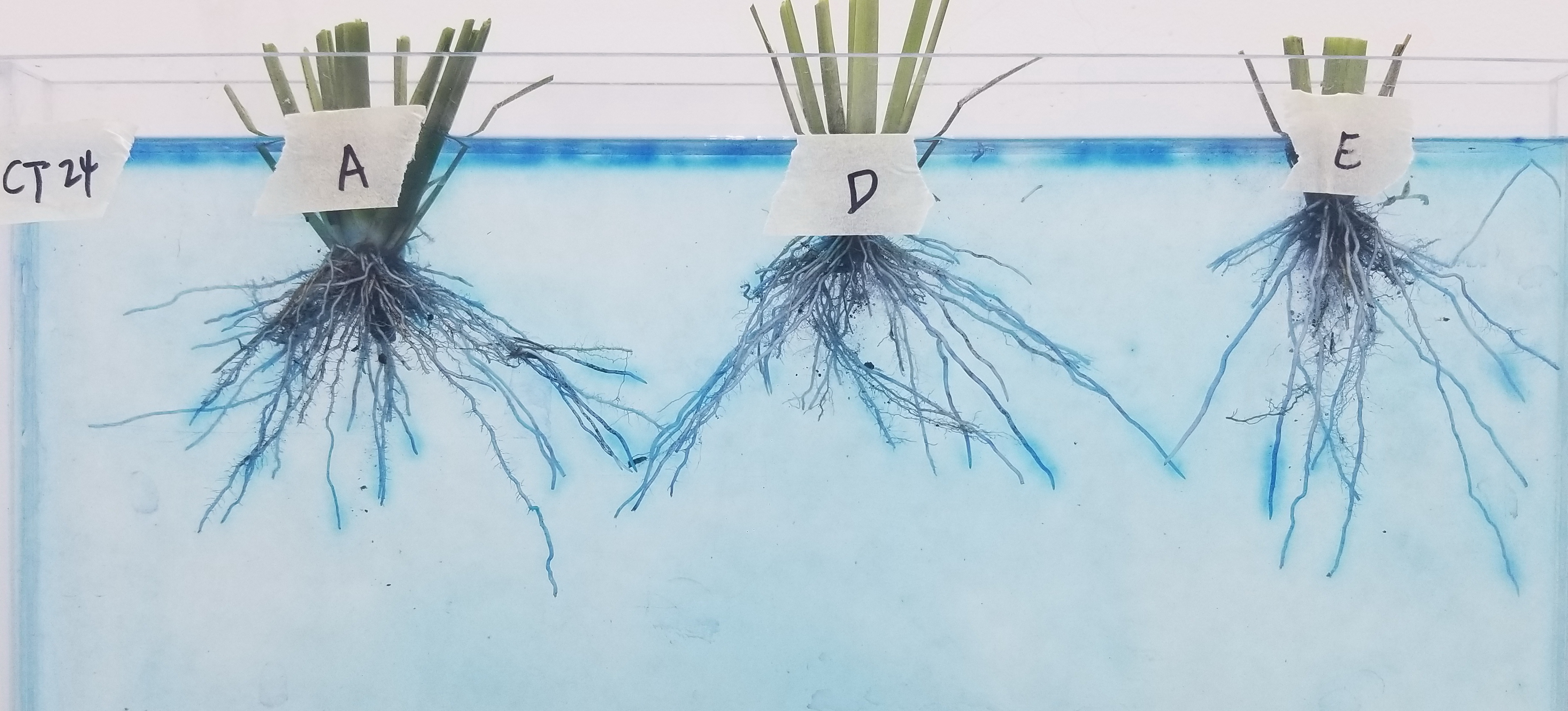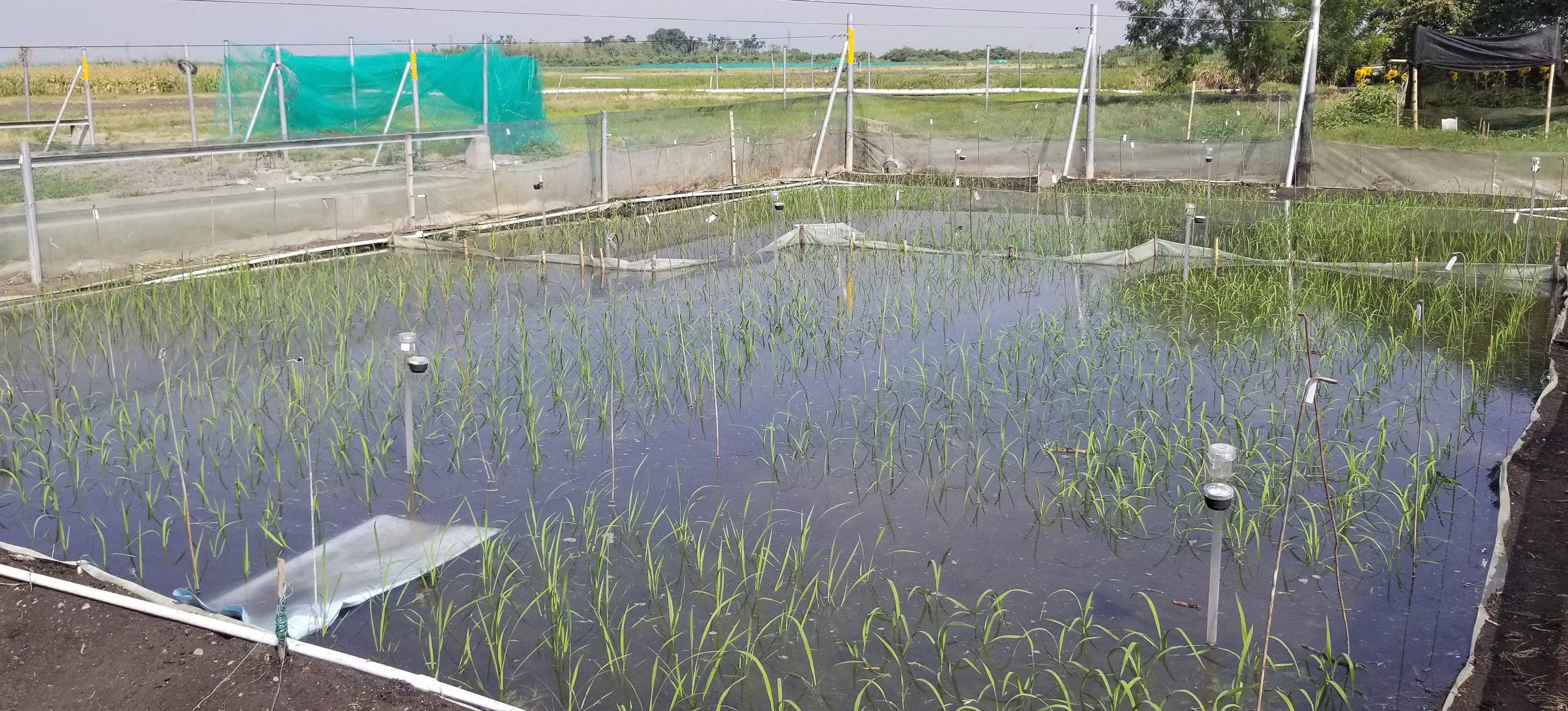Methylene blue staining and radial water loss on field-grown rice plants
Zhiwei Song, a PhD student enrolled at the University of Copenhagen and affiliated with “Climate-smart African rice” is visiting CIAT in Cali, Colombia. He is working with Oryza longistaminata and some crosses between O. longistaminata and O. sativa. Below, he is reporting on the progress of the work, which also involves some technology transfer to CIAT.
Song says: “On September 12th, we initiated the experiment in which I am involved by marking the plots for cultivating rice within the rainout shelter mentioned in my previous blog post. Two specific plots were designated for the experiment: one for the drained treatment, serving as a control, and the other for the waterlogging treatment. Each plot consists of 20 genotypes with three replicates. From this pool, we carefully selected eight genotypes based on key root traits such as root diameter and aerenchyma. These traits have been identified as significant factors of radial water loss in rice, as discussed in my initial publication in Plant and Soil (https://link.springer.com/article/10.1007/s11104-022-05711-y). We considered root length due to its connection with carbon burial in soils.
We commenced the waterlogging treatment by letting in the water. But before doing this, we strategically placed a plastic film in the middle of the plot, considering the slight slope of the field. This ensured uniform water treatment for every block. On the opposite side, the drained treatment, serving as our control, involved watering the plants each morning.
The measurement of radial water loss was conducted on the soil-grown plants; this has never been done before! We combined two balances and simultaneously recorded data using a MAPIR camera, and data points were captured every minute through time-lapse photography. The measurements are now complete, and I am engaged in analyzing the data. The anticipation is profound, awaiting to discover if there are significant differences between the genotypes.
Concurrently, we delved into methylene blue staining of radial oxygen loss in rice roots. Despite the inherent challenges of obtaining field samples without bending or damaging the roots, we managed to obtain good roots for measurement. Please enjoy the visuals of methylene blue staining, showcasing that this particular genotype can form a tight outer apoplastic barrier in roots grown under both drained and waterlogged conditions.”

This is a low-tech solution but it works! Song is conducting radial water loss measurement of rice roots in CIAT, using two balances and a camera programmed for time-lapse photos to monitor loss in mass with time.

Conducting methylene blue staining of radial oxygen loss in rice roots from field-grown plants.
Song says: “On September 12th, we initiated the experiment in which I am involved by marking the plots for cultivating rice within the rainout shelter mentioned in my previous blog post. Two specific plots were designated for the experiment: one for the drained treatment, serving as a control, and the other for the waterlogging treatment. Each plot consists of 20 genotypes with three replicates. From this pool, we carefully selected eight genotypes based on key root traits such as root diameter and aerenchyma. These traits have been identified as significant factors of radial water loss in rice, as discussed in my initial publication in Plant and Soil (https://link.springer.com/article/10.1007/s11104-022-05711-y). We considered root length due to its connection with carbon burial in soils.
We commenced the waterlogging treatment by letting in the water. But before doing this, we strategically placed a plastic film in the middle of the plot, considering the slight slope of the field. This ensured uniform water treatment for every block. On the opposite side, the drained treatment, serving as our control, involved watering the plants each morning.
The measurement of radial water loss was conducted on the soil-grown plants; this has never been done before! We combined two balances and simultaneously recorded data using a MAPIR camera, and data points were captured every minute through time-lapse photography. The measurements are now complete, and I am engaged in analyzing the data. The anticipation is profound, awaiting to discover if there are significant differences between the genotypes.
Concurrently, we delved into methylene blue staining of radial oxygen loss in rice roots. Despite the inherent challenges of obtaining field samples without bending or damaging the roots, we managed to obtain good roots for measurement. Please enjoy the visuals of methylene blue staining, showcasing that this particular genotype can form a tight outer apoplastic barrier in roots grown under both drained and waterlogged conditions.”

This is a low-tech solution but it works! Song is conducting radial water loss measurement of rice roots in CIAT, using two balances and a camera programmed for time-lapse photos to monitor loss in mass with time.

Conducting methylene blue staining of radial oxygen loss in rice roots from field-grown plants.

